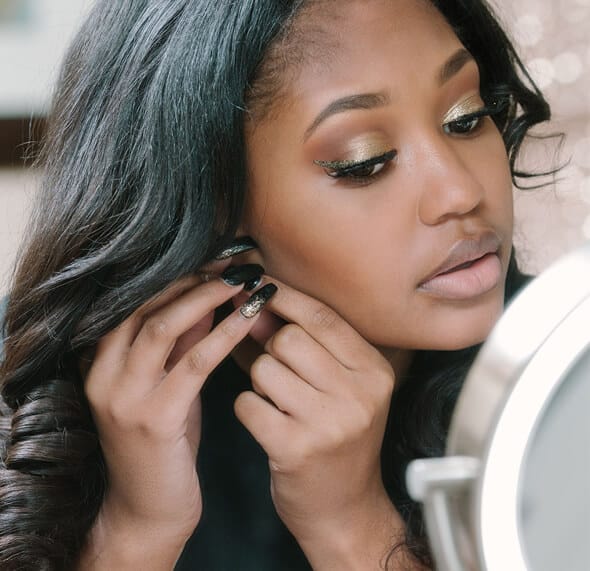Contact Us
10208 Cerny St. #204 Raleigh,
NC 27617
Call Us: (919) 381-5540
10208 Cerny St. #204 Raleigh,
NC 27617
Call Us: (919) 381-5540
Exclusive VIP Access – Experience Glow, Shine & Brilliance. Learn More
Special Glow & Tell Event – July 24


Chin liposuction – also known as submental liposuction and double chin removal – is a minimally invasive procedure that eliminates stubborn fat on the neck and under the chin. This procedure is safe and effective, and it uses local anesthesia, allowing you to achieve a more sculpted neck without the risks associated with more invasive procedures or general anesthesia.
With submental liposuction, it’s never been easier to attain the slim facial silhouette that you’ve always wanted. Highlight your natural beauty with this transformative procedure at Diehl Plastic Surgery.

Earlobe damage is common among men and women. Earlobes are small bundles of skin and fatty tissue, which are strong and flexible to a certain extent. But they’re not as strong compared to other parts of the ear that are mainly cartilage.
Earlobe correction can surgically repair and restore clefted, stretched, ripped, torn and gauged earlobes. It also corrects irregularities that result from injuries, traumas and congenital deformities. Another similar treatment is earlobe reduction, which is a procedure that reduces the size of your earlobes.

The VI Peel is a specialized peel that improves the skin’s texture, tone an luminosity. It uses a unique blend of powerful ingredients for all skin types.
During the process, the peel also stimulates the production of collagen, which is a substance that naturally repairs the skin. As the top layers of the skin peel away, a beautiful and more youthful glow will appear. The VI Peel can be used in combination with other treatments as well.

Dermaplaning, also known as dermablading, is a facial exfoliation and rejuvenation treatment with zero downtime. When performing this procedure, we use a sterile, surgical scalpel to gently remove dead skin cells and fine, vellus hair on the surface of the skin.
The results will last up to four weeks, and the removal of the facial hair will not grow back darker or thicker. While the results of this service performed by itself are amazing, we can also combine it with other treatments, such as chemical peels and microneedling.

Diehl Plastic Surgery offers fillers and injectables, such as Botox®, Dysport®, Newtox Jeuveau, Juvéderm® and Restylane®.
Botox® helps with frown lines and wrinkles between the brows, horizontal lines across the forehead, and “crows feet” around the eyes. We also offer Dysport® (purified from the same protein), which is a wonderful alternative and preferred by many patients. Dysport® can be more effective and last longer in some patients.
Fillers such as Juvéderm® and Restylane® are a wonderful way to restore volume that is lost with aging or to add volume where a patient feels deficient.

Medical microneedling, also known as collagen induction therapy is a minimally invasive procedure used to treat different skin conditions, such as fine lines, wrinkles, hyperpigmentation, scars, stretch marks, acne scars, texture and enlarged pores. General firming and smoothing of the skin is accomplished as well.
A topical numbing agent is applied to the face right before, and then during the procedure, a skin-pen device is used to perform the treatment. The needles are very fine, creating micro-punctures that trigger the skins wound-healing response, which then stimulates collagen production. This remodels the scar tissue, while keeping the overall structure of the skin.

Your skin is subjected to the elements every day. Sun exposure, environmental factors, and pollutants can all contribute to fine lines, wrinkles, discoloration, and other unwanted changes. But with the right skin care routine, you can help your skin protect itself and restore a smooth, radiant complexion.
Diehl Plastic Surgery is proud to offer the Dermasensa skincare line to treat your specific needs. Dermasensa was founded by a group of plastic surgeons and dermatologists to provide cutting-edge cosmeceuticals at affordable prices. They offer a full range of products to suit every skin type.

CO2RE Laser Resurfacing is a procedure that uses a CO2 laser to improve skin tone, uneven pigmentation and texture by skin resurfacing. This treatment specifically targets sun damage, fine lines and wrinkles. The laser can also be used to treat scars from injuries, surgeries, and acne. Skin health in the treatment area is improved by stimulating collagen, a protein essential to skin integrity. After the age of 20, collagen steadily declines.
The Castle Connolly recognition in medicine is considered by physicians to be the only legitimate recognized category of excellence in American Medicine.
10208 Cerny St. #204 Raleigh,
NC 27617
Call Us: (919) 381-5540
10208 Cerny St. #204 Raleigh,
NC 27617
Call Us: (919) 381-5540